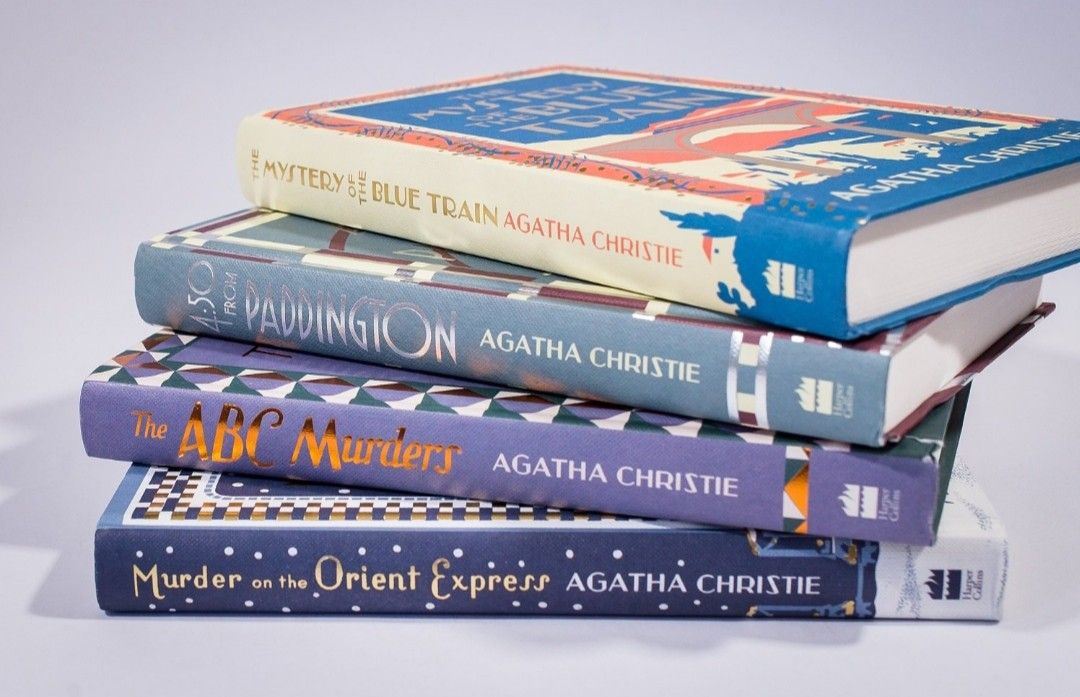Agatha Christie Books: A Comprehensive Guide

Agatha Christie, the undisputed “Queen of Crime,” remains a literary titan, captivating readers for over a century with her intricate plots, memorable characters, and unparalleled suspense. Her prolific output, encompassing over 80 novels and numerous short stories and plays, has cemented her place as one of the bestselling authors of all time, surpassed only by Shakespeare and the Bible in the English language. This comprehensive guide explores the world of Agatha Christie’s books, delving into their genres, enduring legacy, and lasting cultural impact.
The Genres and Evolution of Agatha Christie’s Writing
Agatha Christie’s body of work transcends a single genre, showcasing her versatility and mastery of various narrative styles within the broader umbrella of mystery and detective fiction. While primarily known for her classic whodunits, her novels also delve into psychological thrillers, espionage narratives, and even historical fiction.
Her early works, such as The Mysterious Affair at Styles (1920), established the foundation for her signature style: intricate plots built on meticulous detail and psychological insight, often featuring a closed setting where a limited number of suspects are confined, allowing for a gradual unveiling of clues and motives. This classic whodunit formula, refined over decades, became her hallmark. The introduction of Hercule Poirot in The Mysterious Affair at Styles marked the beginning of one of literature’s most enduring detective series. Poirot, with his distinctive “little grey cells” and unwavering attention to detail, became a symbol of Christie’s genius in plotting and character development.

As her career progressed, Christie expanded her repertoire, experimenting with different narrative structures and settings. Some of her novels, like Death on the Nile (1937) and Murder in Mesopotamia (1936), incorporate exotic locales, vividly depicting the contrast between familiar English characters and the allure of foreign landscapes. Others, such as And Then There Were None (1939), utilize isolated settings that heighten the suspense and claustrophobia, intensifying the reader’s engagement with the unfolding mystery. Her later novels often explored the psychological complexities of her characters more deeply, enriching the narrative with layers of emotional depth. The creation of Miss Marple, another iconic detective, added a different dimension to her work, emphasizing the power of observation and an understanding of human nature in crime solving.

While maintaining her core strengths in plot construction and character development, Christie continually evolved her writing, reflecting the changing times and social landscape, resulting in a body of work that remains relevant and captivating today. Her impact on the mystery genre is undeniable, providing a blueprint for countless writers who followed.
Agatha Christie’s Enduring Characters: Poirot, Marple, and Others

The enduring appeal of Agatha Christie’s novels is intrinsically linked to her captivating characters. Hercule Poirot and Miss Marple, the two most recognizable figures from her vast collection, represent distinct approaches to detective work. Poirot, the meticulous Belgian detective, relies on logic and deduction, employing his famed “little grey cells” to unravel even the most baffling crimes. His eccentricity, arrogance, and self-assurance are balanced by an undeniable brilliance. Miss Marple, on the other hand, represents a more understated, yet equally effective, approach. She utilizes her intimate understanding of human nature and the subtle dynamics of small-town life to identify the culprit. Her quiet observation and seemingly simple insights often expose the hidden motivations behind seemingly perfect crimes.
Beyond these iconic detectives, Christie created a rich cast of supporting characters, each with their own distinctive personalities and motivations. Captain Hastings, Poirot’s loyal companion and frequent narrator, provides a relatable perspective to balance Poirot’s brilliance. The diverse array of suspects found in each novel is another key element of Christie’s storytelling, showcasing her skills in crafting multi-layered characters with complex relationships.
Exploring Agatha Christie’s Most Celebrated Works
Choosing just a few of Agatha Christie’s novels as “best” is inherently subjective, but several consistently rank among her most acclaimed and influential works. These often showcase her narrative mastery and leave a lasting impact on the reader.
-
And Then There Were None: This masterpiece of suspense features a group of strangers lured to a remote island, where they are systematically murdered, following the pattern of a chilling nursery rhyme. The isolated setting and escalating tension create an atmosphere of intense paranoia, making this one of Christie’s most captivating and terrifying novels.
-
Death on the Nile: This novel showcases Christie’s skill in crafting atmosphere, vividly transporting the reader to the glamorous yet dangerous setting of an Egyptian cruise. The characters’ conflicting desires and simmering resentments create a palpable sense of tension, leading to a shocking murder that Poirot must unravel amidst the stunning backdrop of ancient Egypt.
-
The Murder of Roger Ackroyd: This novel is particularly noteworthy for its groundbreaking narrative structure and shocking twist ending, which shattered the conventions of the detective genre at the time and remains a masterful example of Christie’s ability to keep the reader guessing until the very end.
-
Murder on the Orient Express: This classic tale of mystery set on a luxurious train, stranded in the snow, presents Poirot with a seemingly impossible task: solving a murder where nearly every passenger is a suspect. The intricate plotting and suspenseful unraveling of the crime solidify this novel’s place in Christie’s most popular works.
-
Crooked House: Christie herself proclaimed this novel as her personal favorite, highlighting its intricate plot, richly drawn characters, and unexpected twists. The dysfunctional family dynamic adds a complex layer to the murder mystery, challenging Poirot’s ability to solve the case while navigating the tangled web of family secrets.
These are just a few examples of Agatha Christie’s masterpieces. Many other novels, such as Five Little Pigs, Evil Under the Sun, A Murder is Announced, and Ordeal by Innocence, continue to enthrall readers with their clever plots, unforgettable characters, and masterful storytelling.
Agatha Christie’s Cultural Impact and Legacy
Agatha Christie’s influence on literature and popular culture is undeniable. Her novels have been adapted into countless stage productions, radio dramas, films, and television series, showcasing the enduring appeal of her stories across various media. The enduring popularity of her works has led to numerous adaptations, translations, and even video games, solidifying her legacy as a global cultural icon. Her characters, Poirot and Marple in particular, have become household names, recognized and celebrated worldwide. Her impact on the mystery genre is immeasurable, establishing many of the conventions and expectations that audiences and writers alike have come to associate with the genre. Her clever plots, psychological insight, and masterful storytelling techniques continue to inspire and influence authors today. Her ability to create believable, complex characters, regardless of their class and background, is a testament to her skills and contributes to the ongoing relevance of her novels. The enduring appeal of Agatha Christie’s books showcases their enduring ability to engage and captivate readers across generations. The timeless themes of human nature, justice, and the pursuit of truth embedded within her stories ensure their continued relevance for years to come.